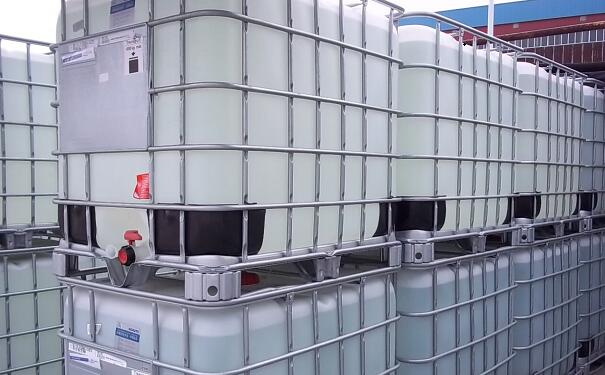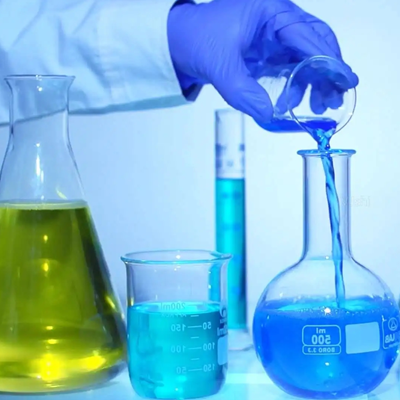Mechanism of Action and Performance of THPS
THPS or Tetrakis Hydroxymethyl Phosphonium Sulfate(CAS No. 55566-30-8), has wide applications in oilfield extraction, aquaculture, wastewater treatment, garbage sterilization and deodorization, and leather flame retardancy. Its bactericidal mechanism is complex and related to various factors such as hydroxyl groups, phosphorus atoms, pH value, temperature, and formulation. The mechanism and performance of THPS can be explained from the following two aspects:

I. Mechanism of Action of THPS in Cooling Water Treatment
In 1995, THPS was registered with EPS as a bactericide and entered the US market. Based on extensive data showing ideal toxicity and environmental safety compared to traditional bactericides, THPS won the 1991 US Green Chemistry Challenge Award and was registered with the US Environmental Protection Agency (EPA). THPS is an environmentally friendly bactericide and is increasingly widely used in the field of cooling water treatment.Due to the unique ecological environment of circulating cooling water systems, microorganisms easily multiply within them, and the large-scale reproduction of microorganisms also generates a large amount of microbial slime in the circulating cooling water system. The rapid proliferation of microorganisms and the slime they produce can lead to a rapid deterioration of cooling water quality, rendering corrosion and scale inhibitors ineffective. This, in turn, causes corrosion of metal equipment in the cooling system, and in severe cases, can even clog pipes, directly threatening equipment safety and normal production. To avoid this, the most direct method is to add THPS to control the proliferation of microorganisms in the system. The structural formula of THPS is (CH2OH)4P·₁/₂SO4, where the phosphorus atom belongs to Group 5. Its sp³ hybrid orbital is connected to four other hydroxymethyl groups to form a tetrahedral structure. The phosphorus atom carries a positive charge, resulting in a very stable molecular structure. Due to the large radius of the phosphorus atom, its polarization is enhanced, increasing the surrounding positive charge and making it easier to electrostatically adsorb negatively charged microorganisms, thus effectively killing them. It has highly efficient bactericidal activity and no environmental side effects.
II. Performance of THPS
1. Excellent Compatibility
THPS does not react with scale inhibitors or corrosion inhibitors in the system, has no corrosive effect on system metals, has a wide applicable pH range, can be used simultaneously with various negatively charged corrosion inhibitors and scale inhibitors, does not easily foam, and the use of corrosion inhibitors and scale inhibitors does not affect the use of THPS; its bactericidal effect is not reduced, and it can even have a synergistic effect with anionic corrosion inhibitors, enhancing the bactericidal effect while improving corrosion inhibition, scale inhibition, and bactericidal effects.
2. Wide Applicability
THPS is effective over a wide pH range, preventing system leaks of amines, ammonia, etc., and organic pollution. It can remove sludge from pipe walls, keeping pipes unobstructed.
3. Excellent Environmental Performance
THPS decomposition residue has a high LD50 value. The decomposition product after rapid sterilization is THPO. Ecotoxicological tests have confirmed that THPS has low toxicity to aquatic organisms, low toxicity to fish, and no bactericidal activity. Its residue has a short residence time in the environment and is easily biodegradable. Experiments show that in industrial wastewater treatment, using 50 μg/g THPS can kill bacteria of 2.5 × 10⁵ to 2.7 × 10³ SRB/mL within 6 hours; in winery cooling circulating water, a THPS concentration of 12 mg/L can reduce the number of bacteria by 10⁵ times and eliminate sludge. The LC50 (96 hours) of THPO for rainbow trout is >5000 mg/L, and the LC50 (96 hours) of THPS for rainbow trout is >119 mg/L.
4. Broad-spectrum bactericide
THPS can kill fungi, bacteria, and algae, including Gram-negative bacteria, Gram-positive bacteria, molds, and algae, especially sulfate-reducing bacteria, and can kill microorganisms on the water surface and in deep water.
In summary, THPS has significant advantages in terms of environmental protection, efficiency, and compatibility, possessing all the conditions to become an excellent bactericide, and its superior environmental performance is its unique advantage. Using THPS can eliminate pollution at its source, make rational use of resources and energy, and reduce production costs.
 Mechanism of Action and Perfor
Mechanism of Action and Perfor
 MPP Flame Retardant|CAS 218768
MPP Flame Retardant|CAS 218768
 Does sodium hypophosphite cont
Does sodium hypophosphite cont
 DOS,DOA,DOZ three dibasic acid
DOS,DOA,DOZ three dibasic acid


